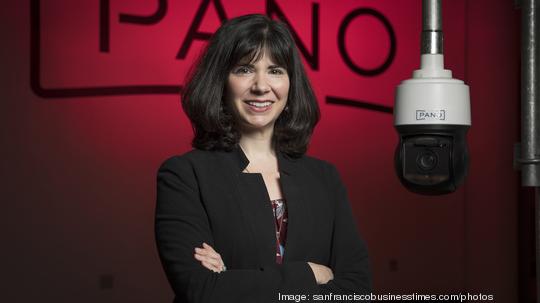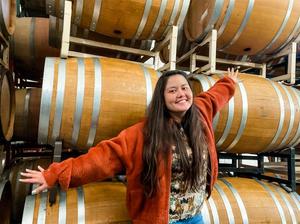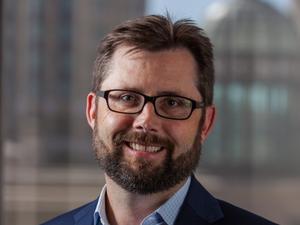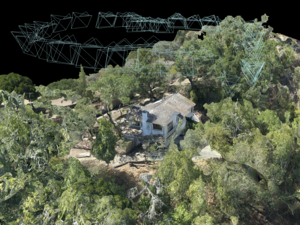
Rains have blanketed much of the Bay Area in recent weeks, likely bringing a premature end to what was gearing up to be a record fire season, but experts agree that the current conditions may be a brief respite from what has increasingly become the new normal.
Pano AI, a San Francisco-based company, is hard at work changing the way communities detect fire and reduce their spread using high-resolution cameras that are always on alert.
CEO and co-founder Sonia Kastner started Pano AI two years ago after a career spent working on solar energy and battery storage technologies, as well as at hardware companies like Nest and Juul Labs.
Kastner positioned the 20-person startup as part of broader shift in the cleantech space from slowing or reversing climate change to adapting to the new conditions posed by already-present effects.
"Last year, when the sky turned red over San Francisco, when the Portland area got hit with devastating wildfires, when Colorado saw an unprecedented wildfire year, we saw that we couldn't wait," Kastner said. "We actually went out and raised our first venture funding after that day the sky turned red and used the money to accelerate our R&D, our sales and go to market so that we could be in in market today with four pilots across the United States demonstrating the technology so by next year we could be deploying hundreds of these."
The company's primary product was inspired in part by the Nest Camera. Dubbed Pano Rapid Detect, the technology consists of a high-resolution mountaintop camera that rotates 360 degrees, recording a panoramic perspective on its surroundings.
That's the first part of its name. The latter comes from the technology employed by the company to analyze the footage and combine it with satellite data and other feeds to detect smoke and pinpoint its origin. Potential wildfires are screened by the company to create a "much higher rate of true positives," Kastner said.
"The goal of Pano Rapid Detect is to compress the time between ignition and response so that you can nip these fires in the bud and contain them while they're still small," Kastner said. "In today's conditions with climate change, fires are spreading faster than ever before and so every minute matters in response."
Preparing for the worst
Chuck Lax, a battalion chief with the Redwood City fire department, has seen his community's concern about wildfire risk skyrocket in line with massive conflagrations across the state meaning more demand for wildfire preparedness.
He was linked to Pano AI through a county-wide organization focused on wildfires and agreed to a pilot with the company that would place a device on a water tower in the city. Since then the fire department has worked to link the technology into its dispatch system. Pano AI has already detected a number of fire incidents, albeit mainly structure fires, that the department was already responding to.
But Lax says he sees the technology as being particularly useful in wildland-urban interface that exists on the western portion of his city. He recounted his experience as a young firefighter driving through the Oakland Hills in 1991 after a firestorm swept through the area killing 25 people and destroying around 3,000 homes.
Still, he has faced a familiar problem in shifting resources upstream from response and into mitigation.
"In the government, every dollar is hard to come by," Lax said, while pointing to new sources of grant funding from state and federal officials to work on preparedness efforts like fuel reduction.
Kastner said the old paradigm is starting to change.
"At the federal level you're starting to see and more discussion around diverting, for example, FEMA money to build back better. Part of building back better is putting in place a threat detection," she said.
A view to the future
With the ubiquity of camera technologies in today's society it may be a bit surprising that a solution like this is not already widespread. But as Kastner tells it, the typical method of detecting wildfires is decidedly low tech.
For the most part, authorities are alerted to wildfires through bystanders calling in reports to emergency services. The problem, according to Kastner, is that many of these 911 calls are actually false alarms (a cloud or smoke from a grill) and callers have a tough time relaying the precise location of the incident. That leads to wasted resources as crews get dispatched to find and confirm the issue.
While some camera solutions exist, Kastner said that technical limitations mean they have to be manually adjusted to view other directions instead of the panoramic scan employed by her company.
Kastner draws a line from her company's technology to the older concept of fire lookout towers, where people were posted in high vantage points to be on the lookout for potential blazes. This practice has largely fallen out of use, but cameras have been installed on some towers as a modern-day analogue.
Each of Pano AI's cameras have a range of 10 to 20 miles with the company estimating that it would take 5,000-10,000 devices to keep watch over the entire country.
The company, which has raised about $6.5 million in funding, is currently at a fraction of that figure with about two dozen stations across four states. But Kastner said Pano AI is poised for major growth in 2022 with the proof points and data gleaned from its initial deployments.
"I'm hugely optimistic that the problem will be less bad ten years from now than it is today because there's a lot of low hanging fruit. Every mega fire that we are dealing starts as a small fire," Kastner said. "We are seeing from our pilots day after day wildfire ignitions are starting and the fire departments we're working with are getting to the scene in less than an hour and they are knocking the fires down while they're still small and possible to contain."







